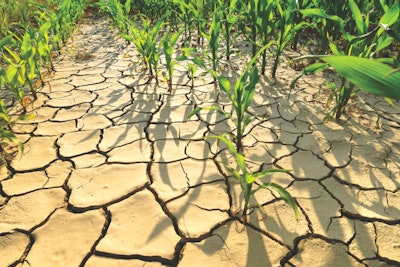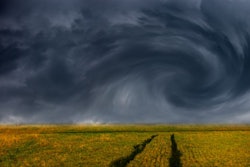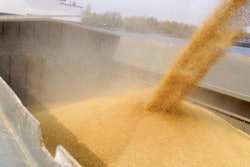
USDA report identifies livestock heat stress as one of top 20 impacts of climate change
Increased incidences of heat stress in livestock may be one of the most recognizable symptoms of climate change within the U.S. agricultural system, according to a new report intended to help producers monitor and address local impacts of global warming.
The report, sponsored by the U.S. Department of Agriculture (USDA), identifies 20 factors producers may choose to monitor to determine how climate change impacts operations in their locale — and to consider individualized methods of adaptation. The selected factors range from weather-related measures such as increased incidence of heat waves and rising nighttime temperatures, to the spread of pests and the timing of budbreak on fruit trees.
Increased financial losses in feed lots and other animal production settings is among the most direct agricultural impacts identified in the report, particularly for cattle and dairy producers. According to the report, milk production declines by .2 kg per each one-unit increase in the temperature-humidity index, a measure that combines ambient temperature and humidity.
Similar outcomes occur in beef cattle, according to Peter Backlund, associate director of the School of Global Environmental Sustainability at Colorado State University and part of the team that assembled the report for USDA.
“Basically what happens to cattle is, when they get hot, the productivity goes down,” he said. “They have fewer calves in hot conditions. They eat less when it’s hot, so they gain less weight. … If you project ahead, you can see that we could be headed to a situation where the cattle are going to be spending a lot more time in that severe stress situation where weights are going to go down and productivity is going to go down.”
How has climate change affected US agriculture?
This latest report doesn’t necessarily make those projections, Backlund said, because climate scientists have already done a great deal of work projecting global outcomes of climate change. This report, he said, aimed to identify ways climate change has already impacted U.S. agriculture.
“Most of this report is looking at things that have already been observed in the last three to four decades, and looking at changes we have seen occur that are closely linked to climate change and how they are already affecting systems of interest. It’s more retrospective,” he said. “We’re really trying to provide regular people with the information they need. If you’re a producer or operator, and you want to understand how climate change might be changing your operations, we’ve identified a set of data streams.”
Climate change will not only increase average annual temperatures, which could make regions favored for cattle production less amenable to these operations, but could also increase the frequency and intensity of heat waves throughout the nation. According to the USDA report, five-day heatwaves are projected to increase in intensity by 11-13 degrees Fahrenheit by the middle of this century.
These kinds of events are likely to have a greater impact on cattle than on swine or poultry because the latter species are often raised in indoor settings, Backlund said. Increased temperatures and potential losses due to heat stress could force producers to move cattle indoors as well, he said, but that could prove costly.
Opportunities in some areas
On the other hand, climate change could potentially offset these costs in other areas. Rising temperatures and increased precipitation in the American Midwest has contributed to increases in American corn production, with harvested acreage increasing from an average of .64 million acres between 1995-99 to 3.06 million acres from 2015-19. This could decrease costs and open new opportunities in new areas, according to the report.
As a researcher whose work has focused more on the human health impacts of climate change, Backlund said his team’s work on agricultural impacts had him feeling optimistic about the resilience he’s observed within the industry. Agriculture has a history of climate adaption, he said, and with more producers taking an interest in climate change, he believes livestock producers are well positioned to make use of innovative solutions such as selective breeding and using feed to manage heat stress.
“One of the things that is underappreciated is that agriculture is being challenged by climate change, but also has this record of adaptation,” he said. “It’s an area of climate change that’s nice to work on because you’re not always talking about disaster and things that are going to go wrong. You see the potential for really creative responses that minimize the damages.”











